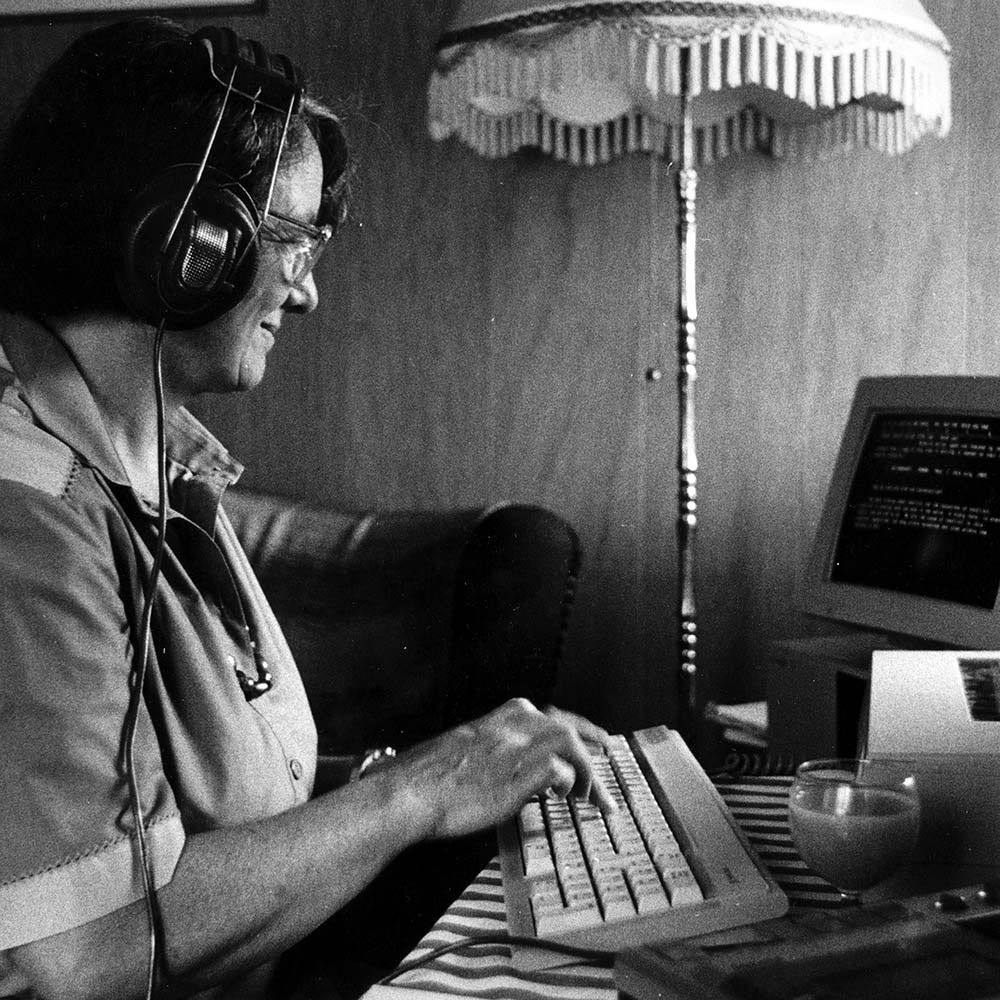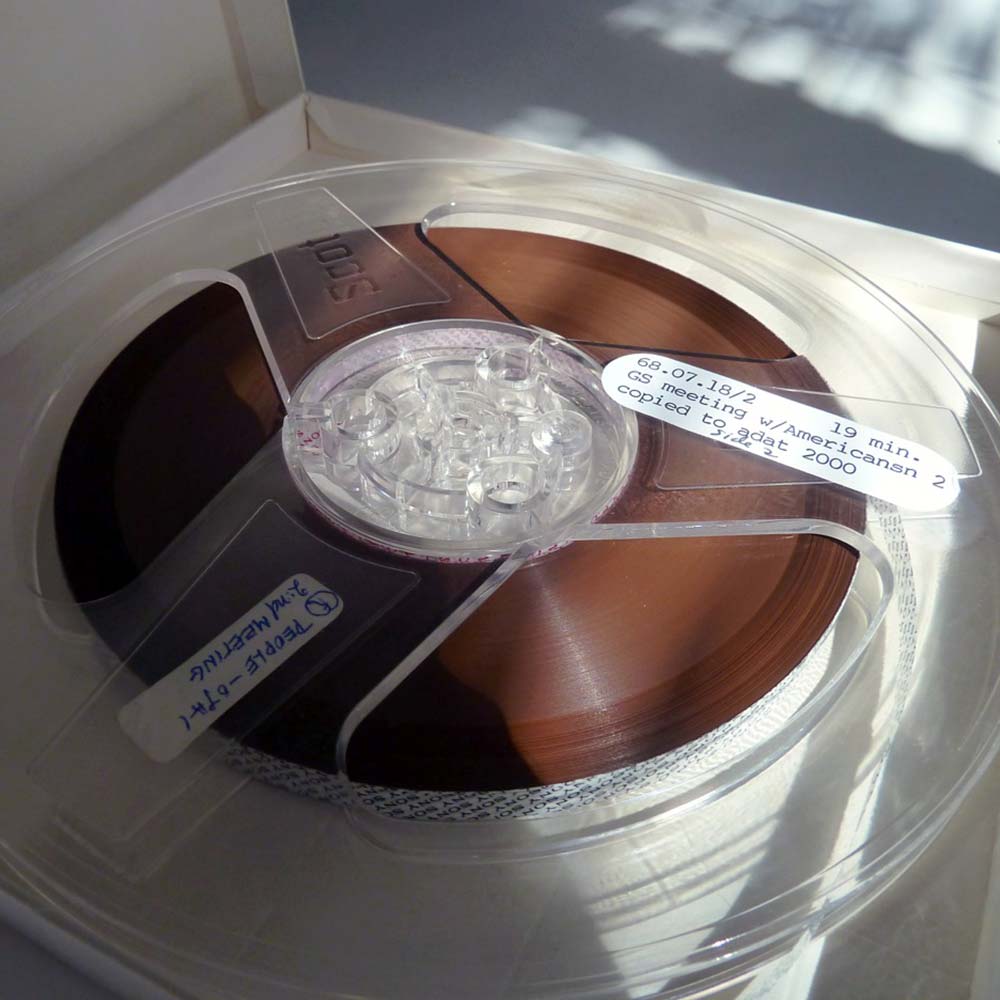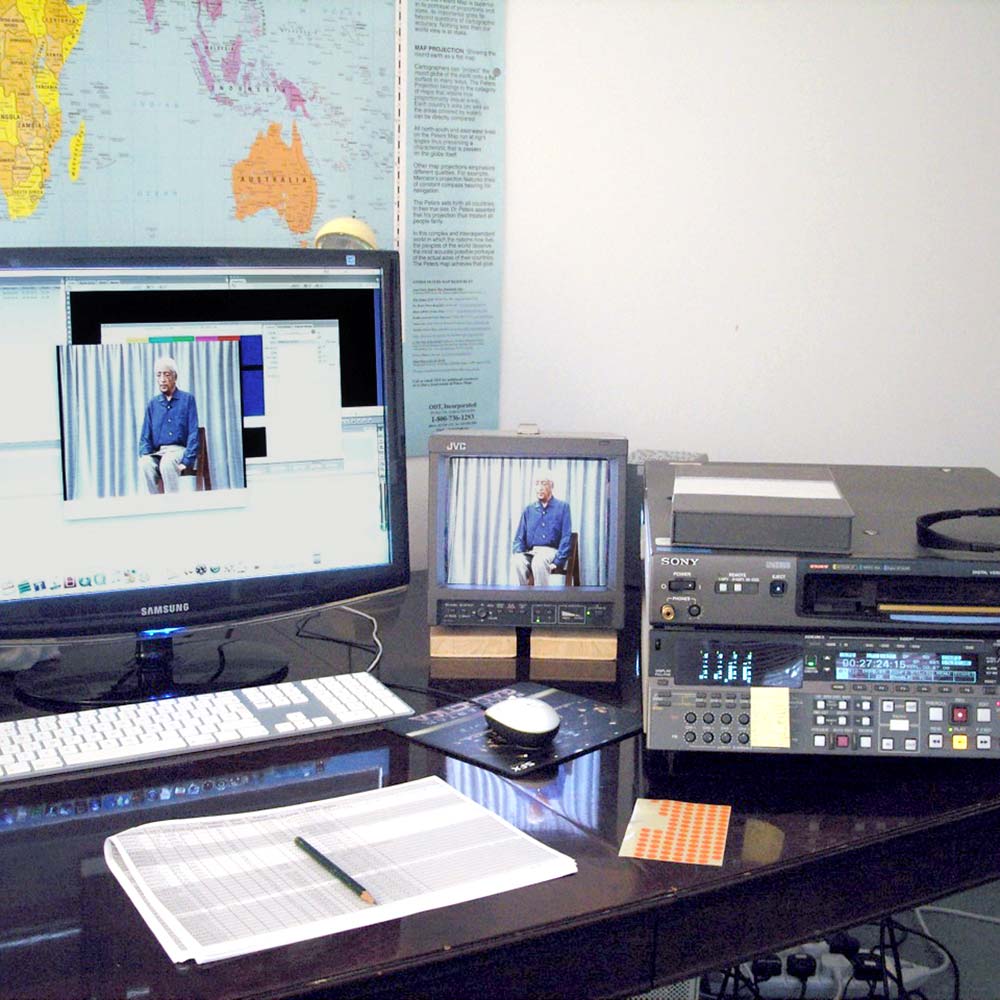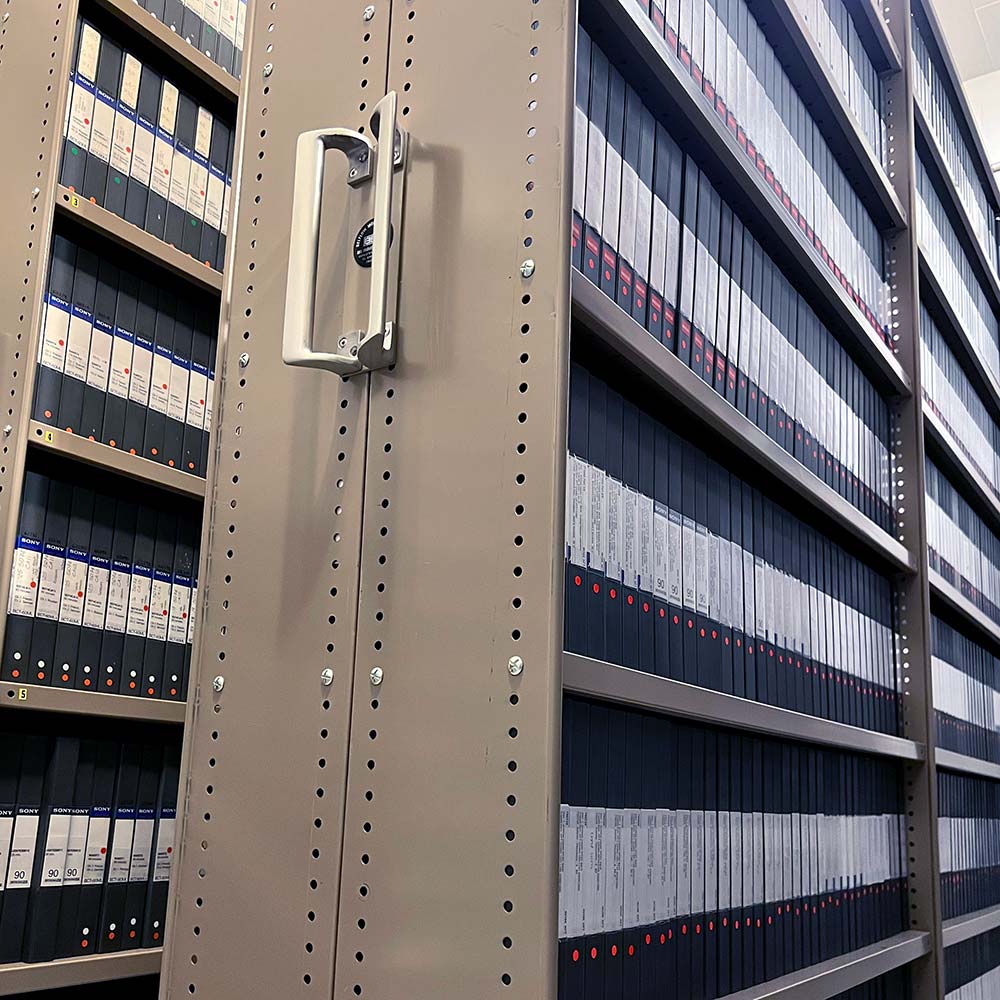During his lifetime, Krishnamurti’s teachings were recorded using mostly analogue methods, from stenographer notes to audio recordings on wire and then tape, to film and early videotape formats. The supplementary material – letters, photographs, articles, etc. – was also on paper or photographic negatives: again, analogue. As technology advanced, the Krishnamurti Foundations were able to start utilising digital technology. This began with word-processed transcripts in the 1980s and pulse-code modulation audio recordings. This mainly analogue collection was carefully preserved in the Krishnamurti archives in India, America and at Brockwood Park in the UK.
In this century, the main thrust of the archive work has been to convert these tens of thousands of analogue items into digital formats. This work was informed by the cost of these digitisation projects and the available technology. We did not want to compromise on quality by doing the work too soon, for example converting the video recordings to a compressed format versus waiting to capture the video frame by frame, uncompressed, some years later.
Video being more technologically challenging and advanced than audio, the digitisation of Krishnamurti’s recordings began with the audio reels held at Krishnamurti Foundation Trust at Brockwood and The Krishnamurti Foundation of America in Ojai, California, in the early 2000s. Thanks to the safekeeping of the audio reels in the stable environment of the archives, nearly all of the 3,000 audio recordings were playable, with only a few difficulties with sticky tape or shedding of the magnetic particles.
This audio digitisation involved feeding the output of professional reel to reel players into state-of-the-art analogue-to-video converters, via a finaliser, into a Mac Pro computer. This represented hundreds of hours of work, as the digitisation process occurs in real-time. The resulting uncompressed WAV files were saved onto gold archival-grade discs for the vault, and on servers.
For the video, after a couple of false starts using digital tape and Motion JPEG2000 formats, the video digitisation was completed by KFT in 2010. Thanks to a generous donation, high-end video players were able to be hired from London. A technician flew to Brockwood from India, and together with foundation staff, the capture of around 600 video recordings took place every day for weeks, from early morning into the evening. Overnight, the digital files (weighing in at 100GB per hour of video) were backed up onto LTO tape. These were later copied to hard drives and copies were sent to the sister archive in Ojai, where they are stored on a high-capacity server. In 2022, the archive files are also being uploaded to cloud storage.
At around the same time as the audio digitisation, work began scanning the huge collection of manuscripts, letters, articles and photographs. This was a relatively simple task, albeit very time-consuming, taking over a decade to complete. Each item was scanned using professional equipment to the highest sensible resolution. The resulting tens of thousands of archive files were then converted into a lower resolution for ease of reference. This means researchers, on application, can access archive material wherever they are located.
These digitisation efforts have ensured that Krishnamurti’s work is preserved for the future (while, of course, keeping the analogue items safe). We keep a careful eye on technological advances to ensure the digital formats we use are still valid, with migration to new formats as needed. From these best-quality archive captures, the audio and video have been produced and converted into uploadable formats to create the online content we are all familiar with and able to access so readily on the internet. The ease at which these are viewed today may obscure the decades of activity that went into making them available, and it is hoped this article goes some way to highlight this work.
Future archive projects will include high definition film digitisation and video restoration. If you would like to donate to help us with our ongoing archives work, you may do so here.





